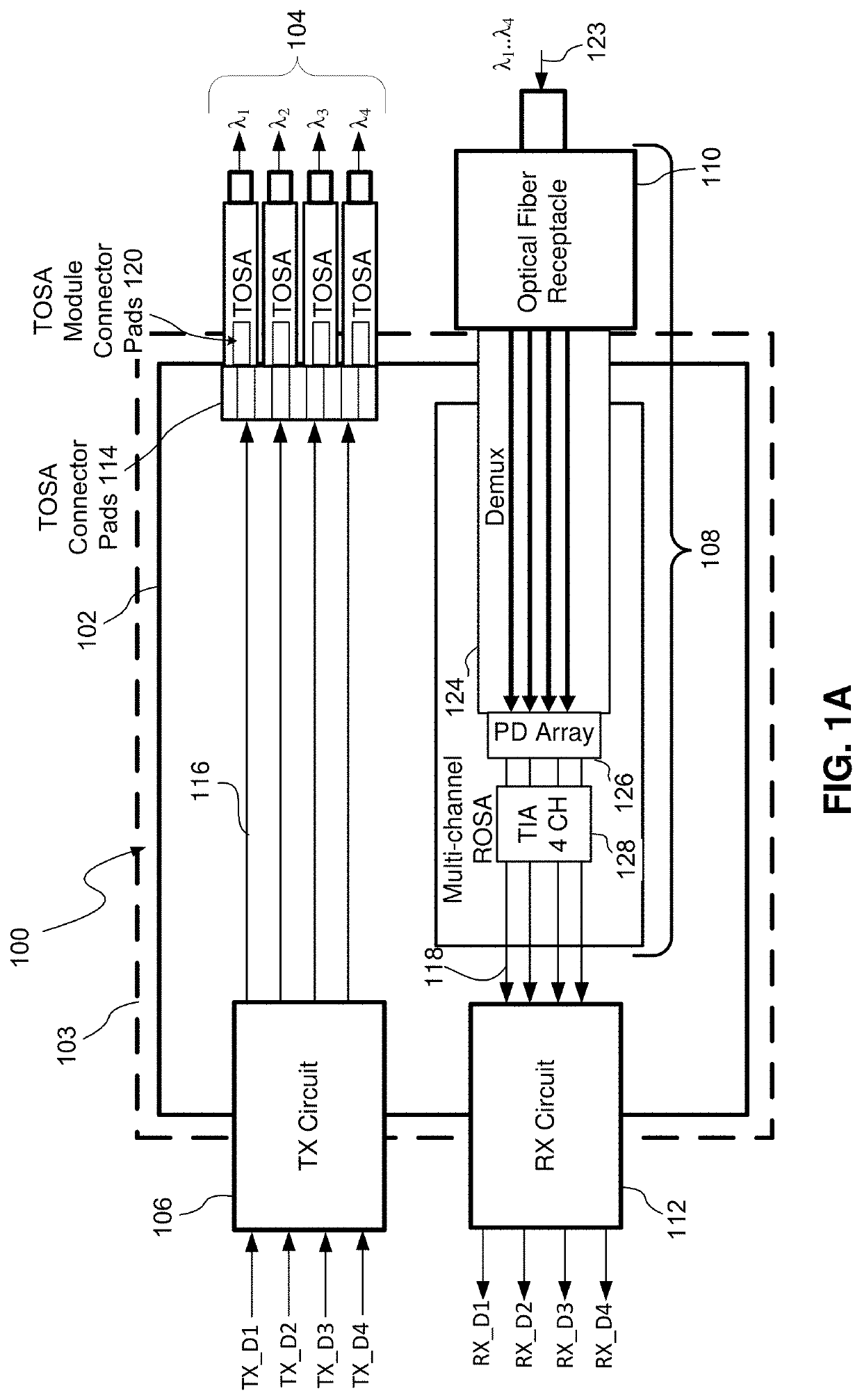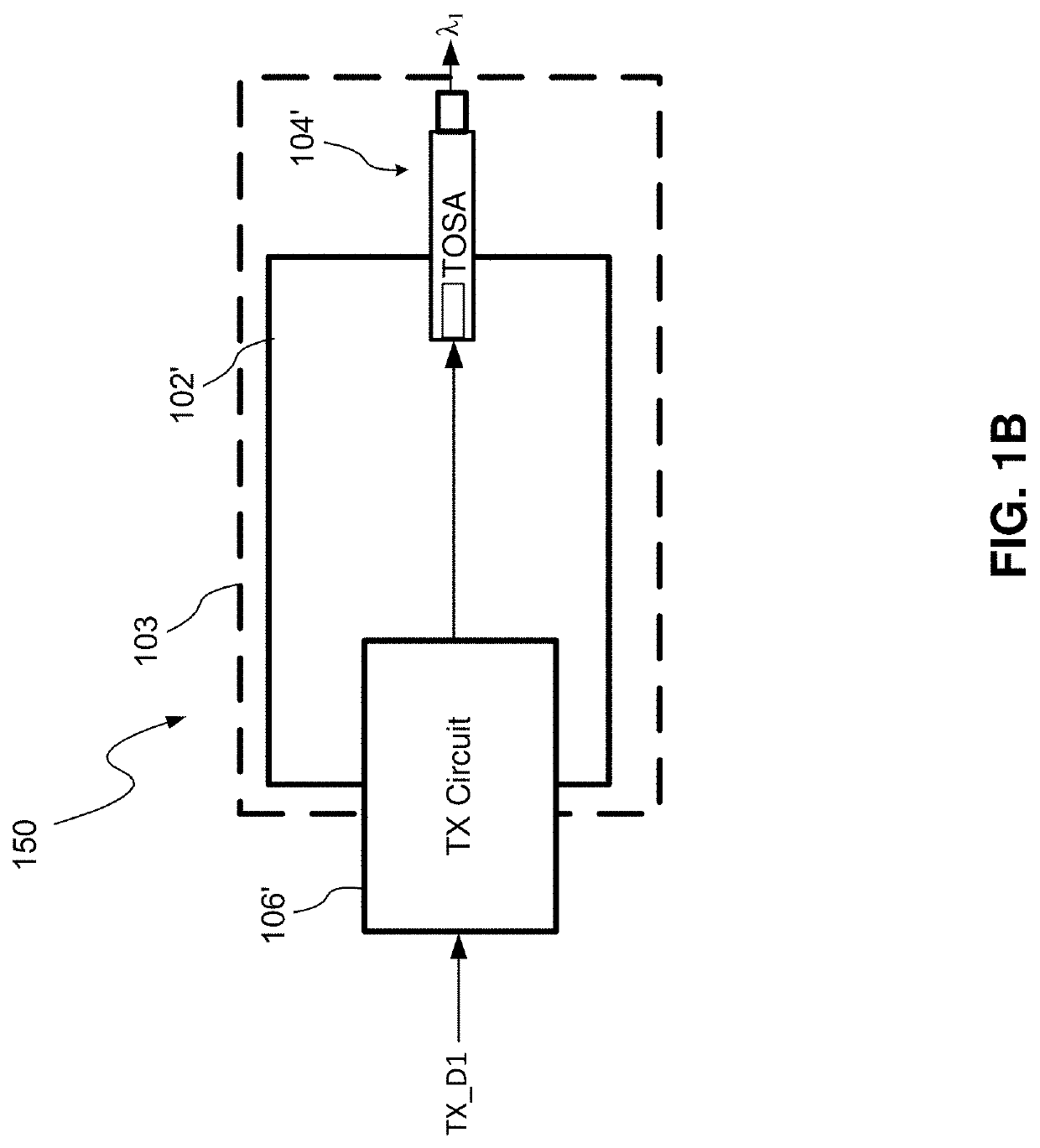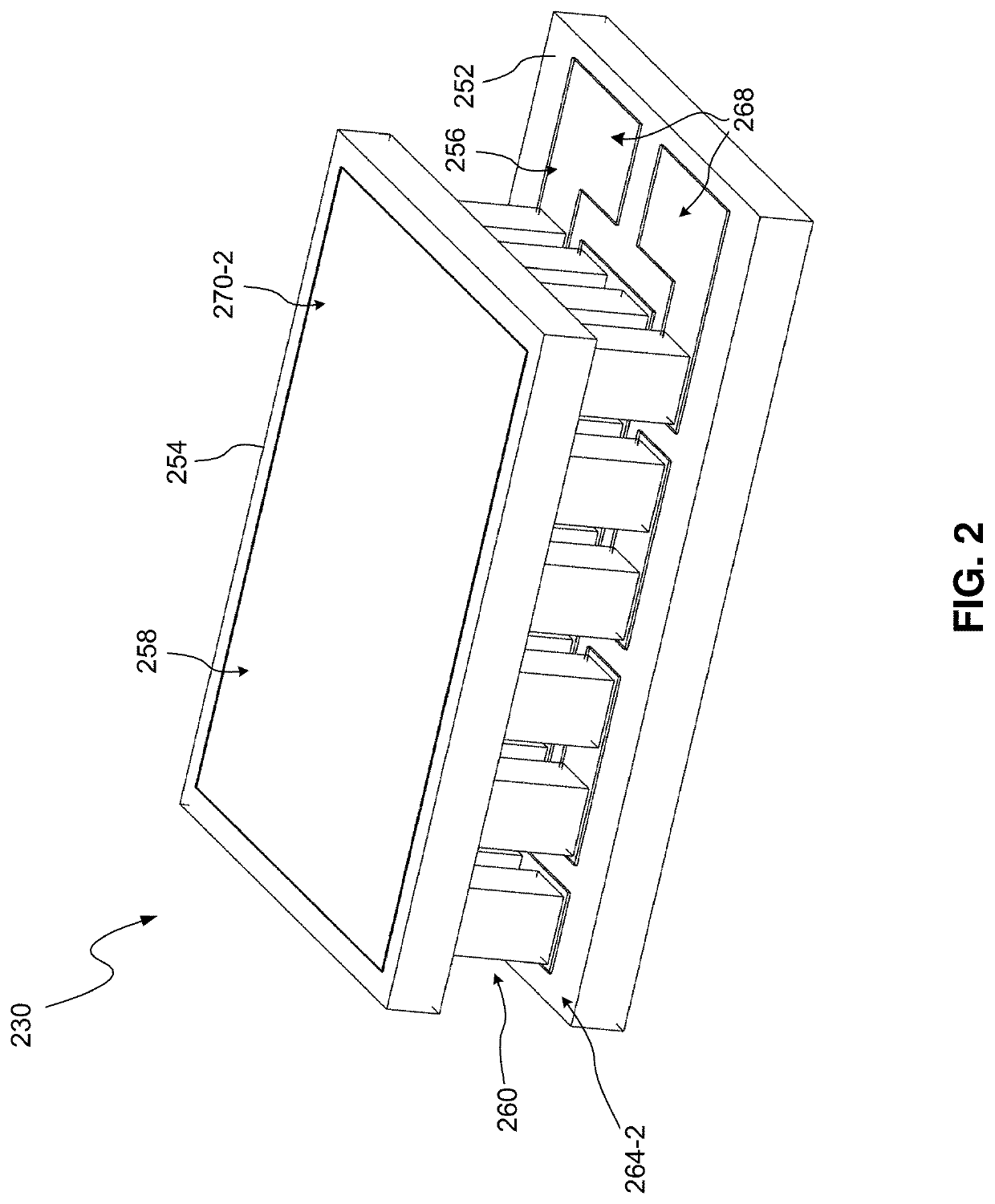Techniques for attachment and alignment of optical components on a thermoelectric cooler (TEC) and an optical subassembly implementing same
a technology of thermoelectric cooler and optical component, applied in the field of optical communication, can solve the problems of thermal management, insertion loss, and manufacturing yield
- Summary
- Abstract
- Description
- Claims
- Application Information
AI Technical Summary
Benefits of technology
Problems solved by technology
Method used
Image
Examples
Embodiment Construction
[0025]As discussed above, some optical transmission systems send and receive channel wavelengths over relatively long transmission distances, e.g., up to 2 km and beyond. The optical signal quality over such long distances therefore becomes important in order to maintain nominal performance. One approach to maintaining optical signal quality includes temperature control devices, e.g., thermoelectric coolers (TECs), in thermal communication with laser diodes (LDs) within transmitters / transceivers to maintain a nominal operating temperature and minimize or otherwise reduce wavelength drift.
[0026]Such TECs can include contact pads for mounting of optical components, e.g., laser diodes, monitor photodiodes, focus lens, and so on, via a soldering process. Soldering processes generally include a pre-tinning stage, whereby a soldering material such as a tin alloy is reflowed via application of heat, e.g., to reach the eutectic temperature, in order to cause the same to coat and adhere to a...
PUM
| Property | Measurement | Unit |
|---|---|---|
| transmission distances | aaaaa | aaaaa |
| temperature | aaaaa | aaaaa |
| channel wavelengths | aaaaa | aaaaa |
Abstract
Description
Claims
Application Information
 Login to View More
Login to View More - R&D
- Intellectual Property
- Life Sciences
- Materials
- Tech Scout
- Unparalleled Data Quality
- Higher Quality Content
- 60% Fewer Hallucinations
Browse by: Latest US Patents, China's latest patents, Technical Efficacy Thesaurus, Application Domain, Technology Topic, Popular Technical Reports.
© 2025 PatSnap. All rights reserved.Legal|Privacy policy|Modern Slavery Act Transparency Statement|Sitemap|About US| Contact US: help@patsnap.com



